By Guen Bradbury
Behavioural Problems in Rabbits: A Clinical Approach PDF. It gives you the tools you need to address any unwanted behaviour in a rabbit under your care.
Whether you are an owner, a veterinary surgeon or nurse, or if you rehome rabbits, this book will help you:
- Understand what influences rabbit behaviour
- Diagnose the cause of a specific problem behaviour
- Learn the principles of modifying rabbit behaviour
- Construct an achievable plan to change a specific behaviour
- Review and refine the behaviour modification plan as needed
Read more: Veterinary Nursing of Exotic Pets and Wildlife, 3rd Edition
Table of Contents
Preface x
Key points xii
1-Introduction
Changing expectations 2
Domestication 4
Considerations for behaviour modifi cation in rabbits 6
Weaker human–animal bond 6
Cultural perception that rabbits are cheap 7
Rabbit bites rarely cause severe injury 7
Low awareness of treatment options 7
How ‘ownership styles’ aff ect owner beliefs 7
Authoritative 8
Authoritarian 8
Indulgent 8
Uninvolved 8
How common are problem behaviours in rabbits? 9
Empathising with the owner 10
2-What is the problem behaviour?
History taking 11
Asking about early history of the rabbit 12
Asking about how the rabbit spends its time 12
Asking about signs of pain 13
Keeping a diary of the behaviours 15
Home visits 15
Photographs and videos 16
Clinical examination 17
Reviewing changes and assessing success 19
3-Why is the problem behaviour occurring?
Physical/functional domains: Survival-related factors 24
Nutrition 24
Environment 40
Health 52
Physical/functional domain: Situation-related factors 65
Interactions with physical environment 65
Interactions with other rabbits 71
Interactions with humans 82
Interactions with other pet species 95
Aff ective experience domains 103
Why do individual rabbits have diff erent reactions to the same stimulus? 103
4-How can I change behaviour?
Understand the rabbit’s communication 110
Minute-to-minute communication strategies 110
Longer-term communication strategies 117
Changing behaviour through changing environment 120
Comparing the eff ect of diet, environment and companionship on behaviour 120
How to provide companionship 122
Providing a more stimulating environment 130
Reducing the need to pick up a rabbit 131
Changing diet 132
Changing behaviour through behavioural modifi cation 133
Types of rabbit learning 134
What motivates rabbits? 137
Why is punishment usually ineff ective in rabbits? 137
How can positive reinforcement training be used with rabbits? 139
Training techniques 141
What cued behaviours are useful in rabbits? 148
Tips for improving clicker training effi ciency 154
Changing behaviour through pharmacological means 156
5-How can I resolve a specifi c behavioural problem?
Resolving an unwanted behaviour 158
Method 1: Remove opportunity for the rabbit to show the behaviour 158
Method 2: Punish the behaviour 158
Method 3: Negatively reinforce the behaviour 159
Method 4: Wait for the behaviour to go away on its own 160
Method 5: Train an incompatible behaviour 160
Method 6: Put the unwanted behaviour on cue 161
Method 7: Shape the absence of the behaviour 161
Method 8: Change the motivation of the rabbit 162
Rabbit–human interactions 163
Aggression 163
Fear-related problems 170
Diffi culty catching rabbit 171
Sexual or reproductive behaviour directed at people/objects 171
Rabbit–rabbit interactions 173
Aggression 173
Sexual behaviours 175
Barbering 176
Conspecifi c overgrooming 177
Rabbit–environment interactions 178
Elimination 178
Destruction 182
Self-directed behaviours 185
Undergrooming 185
Overgrooming 187
Self-mutilation 188
Stereotypies 188
Food neophobia 190
6-Conclusion
Key points 192
Contact details 192
Acknowledgements 193
Appendix: Advice sheets 194
Advice sheet 1: Structuring the behavioural consultation 195
Advice sheet 2: Questions for history taking 196
Advice sheet 3: Keeping a behaviour diary 198
Advice sheet 4: Changing the diet of adult rabbits 199
Advice sheet 5: Improving an outdoor environment 201
Advice sheet 6: Improving an indoor environment 204
Advice sheet 7: Constructional approach training 207
Advice sheet 8: Clicker training 210
Advice sheet 9: Bonding 212
Advice sheet 10: Litter training 215
Advice sheet 11: Puzzle feeding 217
Advice sheet 12: How to interact with your rabbits 219
Advice sheet 13: Training rabbits to be lifted or moved 221
Glossary
Further reading
Bibliography
Index
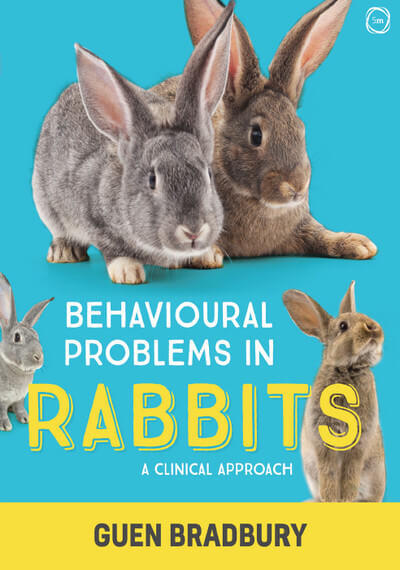


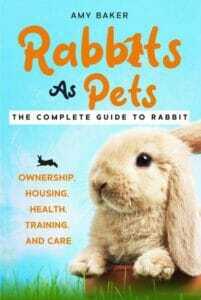

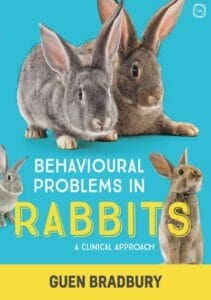


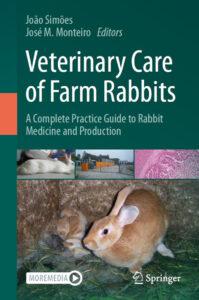

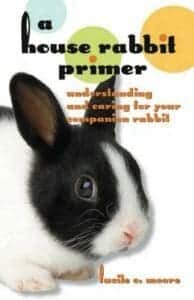




![Ettinger’s Textbook of Veterinary Internal Medicine 9th Edition [PDF+Videos] Ettinger’s Textbook of Veterinary Internal Medicine 9th Edition [True PDF+Videos]](https://www.vet-ebooks.com/wp-content/uploads/2024/10/ettingers-textbook-of-veterinary-internal-medicine-9th-edition-100x70.jpg)

![Textbook of Veterinary Diagnostic Radiology 8th Edition [PDF+Videos+Quizzes] Thrall’s Textbook of Veterinary Diagnostic Radiology, 8th edition PDF](https://www.vet-ebooks.com/wp-content/uploads/2019/09/textbook-of-veterinary-diagnostic-radiology-8th-edition-100x70.jpg)






